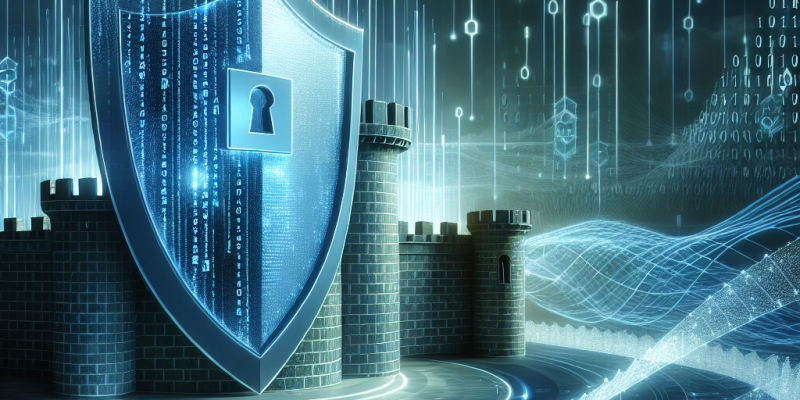Beyond Firewalls: Innovative Strategies for Modern Cyber Defense

In an era defined by rapid technological advancement and increasing digital interconnectedness, the challenges of cyber defense have never been more daunting. Traditional security measures, such as firewalls and antivirus software, while still essential, are no longer sufficient to counteract the sophisticated tactics employed by cybercriminals. Today’s threat landscape is diverse and evolving, necessitating a multifaceted approach to cybersecurity. Here, we explore innovative strategies that go beyond firewalls to enhance modern cyber defense.
1. Zero Trust Architecture
Zero Trust is gaining traction as a foundational principle for modern cybersecurity. This model operates on the premise that organizations should not automatically trust any entity—whether inside or outside the network. Instead, verification is required at every stage of digital interaction. Implementing Zero Trust involves segmenting networks, enforcing strict access controls, and continuously monitoring user behavior. By assuming that breaches may already exist, organizations can better protect sensitive data and mitigate risks.
2. Machine Learning and AI in Threat Detection
Artificial Intelligence (AI) and machine learning are transforming how cybersecurity threats are detected and addressed. By leveraging advanced algorithms, organizations can analyze vast amounts of data in real time, identifying anomalous behavior that might indicate a cyber threat. These intelligent systems can also learn from past incidents, adapting and improving defenses over time. Automated responses can further enhance efficiency, allowing security teams to focus on strategic initiatives rather than being bogged down by routine alerts.
3. Extended Detection and Response (XDR)
XDR is an integrated orchestration of security tools and processes across multiple security layers—network, endpoint, server, and email security. This unified approach allows for better detection, investigation, and response to threats by correlating data from various sources. XDR solutions streamline alert management and reduce the time it takes to respond to incidents, thereby enhancing the overall security posture of an organization.
4. User Behavior Analytics (UBA)
Understanding user behavior is pivotal in detecting insider threats and compromised accounts. UBA tools analyze user activities to establish a baseline of normal behavior and flag deviations that could indicate malicious intent. By incorporating UBA into a broader strategy, organizations can fortify their defenses against not just outside threats but also potential vulnerabilities from within their ranks.
5. Incident Response Planning and Simulations
Preparation is key to effective cybersecurity. Developing a robust incident response plan and conducting regular tabletop exercises ensures that organizations are ready to respond swiftly and effectively when a breach occurs. These simulations help teams understand their roles in managing incidents, identify gaps in their response strategies, and improve overall resilience against future threats.
6. Supply Chain Security
As businesses increasingly rely on third-party vendors and cloud services, the security of the supply chain has become a significant concern. Organizations must conduct thorough risk assessments of their vendors and ensure that these partners adhere to stringent security standards. Implementing measures such as continuous monitoring and audits can help mitigate risks associated with supply chain vulnerabilities.
7. Cyber Hygiene Training and Awareness Programs
Human error remains one of the leading causes of security breaches. Regular training and awareness programs aimed at educating employees about best practices, phishing threats, and social engineering tactics can significantly reduce risk. Cultivating a security-first culture empowers employees to recognize and report potential threats, strengthening the organization’s overall security framework.
8. Decentralized Security Solutions
Decentralization is an emerging strategy that leverages blockchain technology and distributed networks to enhance security. By removing single points of failure, decentralized systems can offer increased resilience against attacks. This approach is particularly useful in sectors like finance and healthcare, where data integrity is paramount.
9. Collaboration and Information Sharing
Finally, collaboration between organizations, industry groups, and law enforcement can facilitate a more effective response to cyber threats. Sharing information about vulnerabilities, attack vectors, and remediation strategies helps build a collective defense, making it harder for cybercriminals to succeed.
Conclusion
As cyber threats continue to evolve, so too must the strategies we deploy to combat them. Beyond traditional firewalls, innovative approaches such as Zero Trust architectures, AI-driven threat detection, and a focus on human factors in security are vital in creating a robust cyber defense ecosystem. By adopting these modern strategies, organizations can better prepare for and mitigate the risks posed by an ever-changing threat landscape. Embracing a proactive and holistic view of cybersecurity not only safeguards critical assets but also fosters trust and resilience in the digital age.














